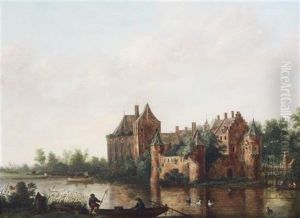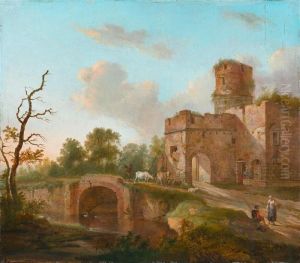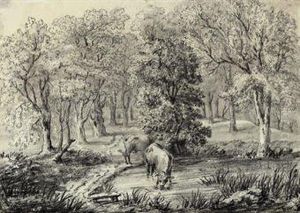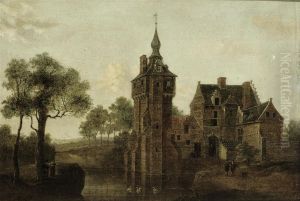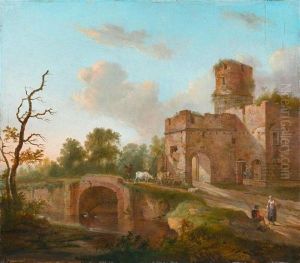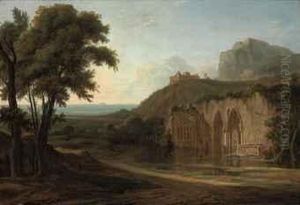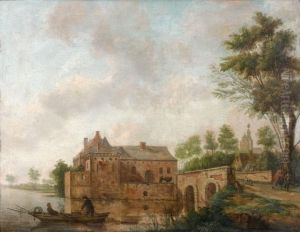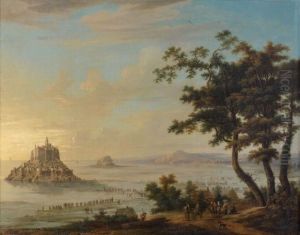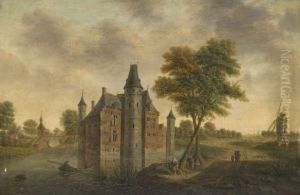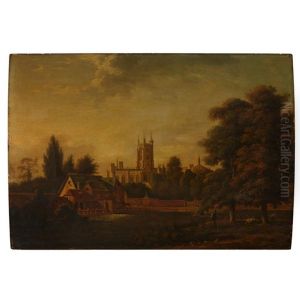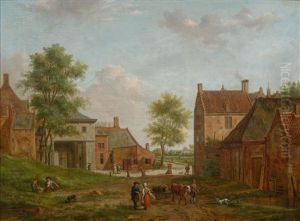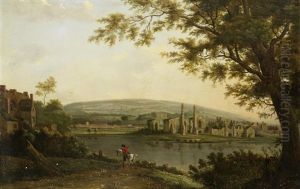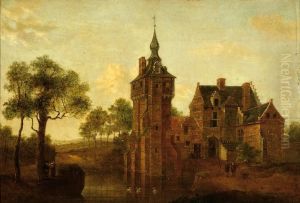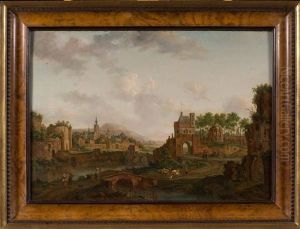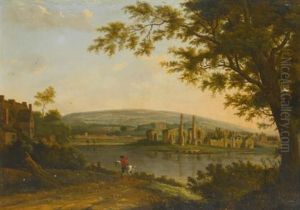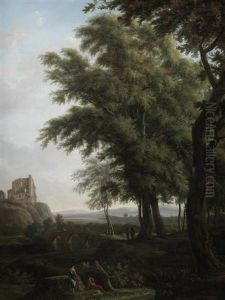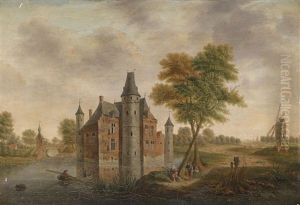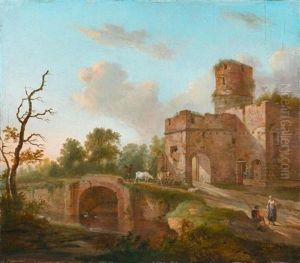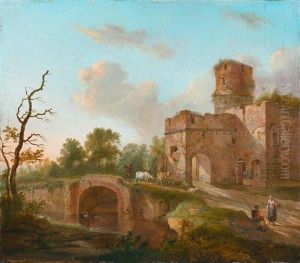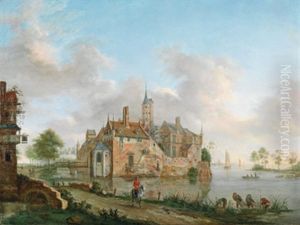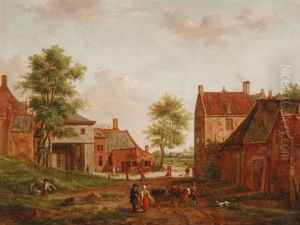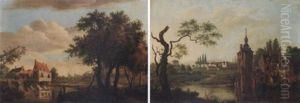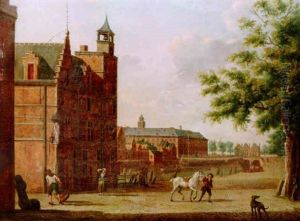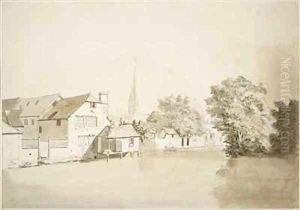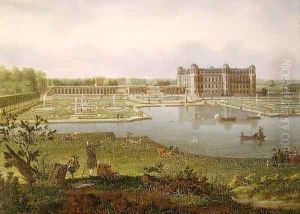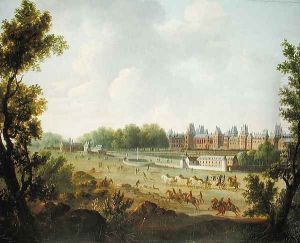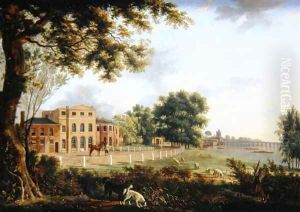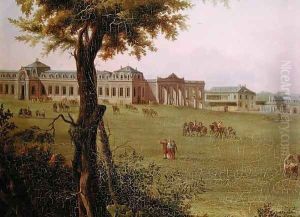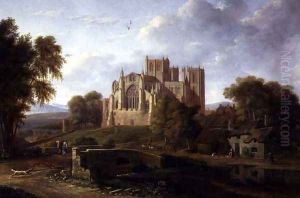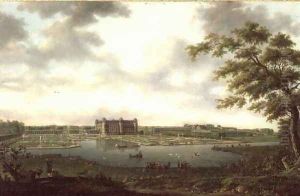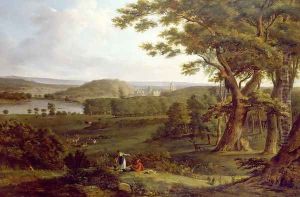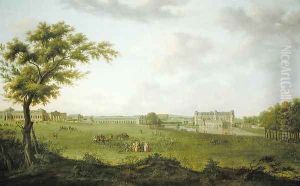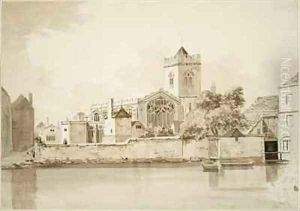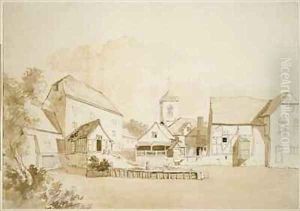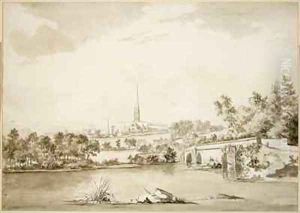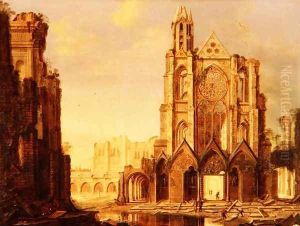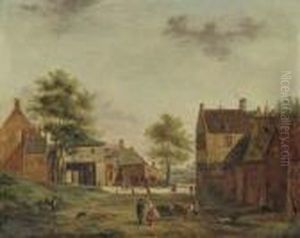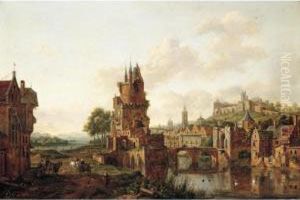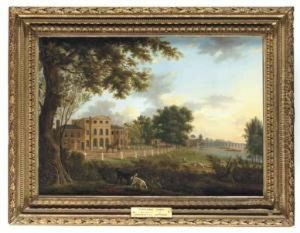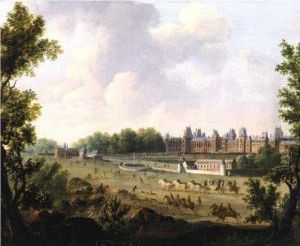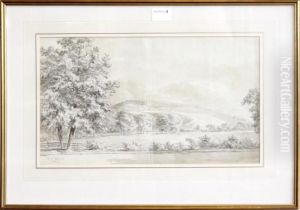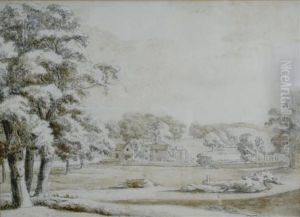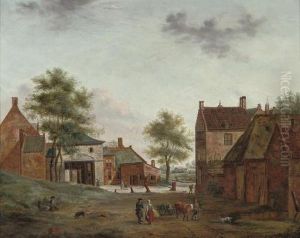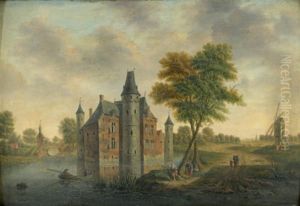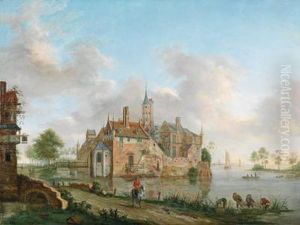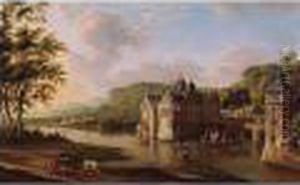Hendrik Frans de Cort Paintings
Hendrik Frans de Cort was a Flemish landscape painter, etcher, and draughtsman who was active in the latter half of the 18th century. Born in Antwerp in 1742, he was known for his picturesque views and landscapes which often included historical buildings or ruins. His works were characterized by a meticulous attention to detail and a harmonious composition, which earned him a reputation as one of the notable landscape artists of his time.
De Cort initially trained with Hendrik-Jozef Antonissen and later with the landscape painter Balthazar Paul Ommeganck, both of whom were influential figures in the Antwerp artistic scene. He became a master in the Antwerp Guild of Saint Luke in 1767, establishing his status as a professional artist. After spending some time in Antwerp, de Cort moved to London in 1791, where he continued to work and exhibit. His relocation to England was in part a response to the tumultuous political climate in the Low Countries during the French Revolutionary Wars.
While in England, de Cort found a degree of commercial success and his works were sought after by collectors. He produced views of country estates and castles, which appealed to the British taste for landscape paintings with a sense of historical grandeur. His landscapes were not only appreciated for their aesthetic qualities but also for their topographical accuracy, which made them valuable records of the British countryside during the Georgian period.
De Cort exhibited at the Royal Academy and the British Institution, and his works were engraved and widely circulated, contributing to his popularity. Some of his notable works include views of Richmond Hill, Windsor Castle, and Hampton Court. Despite his success, de Cort remained relatively humble and dedicated to his craft throughout his life.
Hendrik Frans de Cort died in London in 1810. Although he spent a significant portion of his career in England, he is still regarded as part of the Flemish artistic tradition. His works continue to be of interest to collectors and art historians, particularly those specializing in landscape painting and the pictorial representation of historical architecture.
